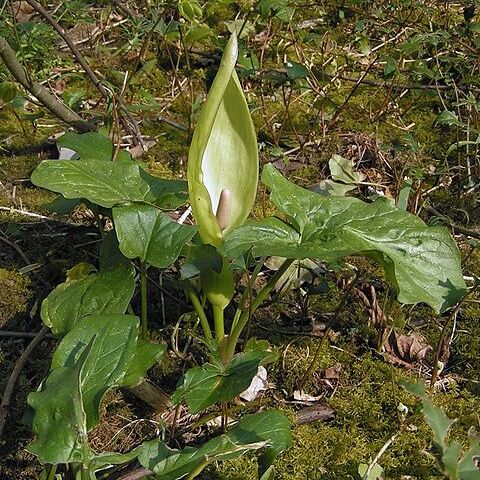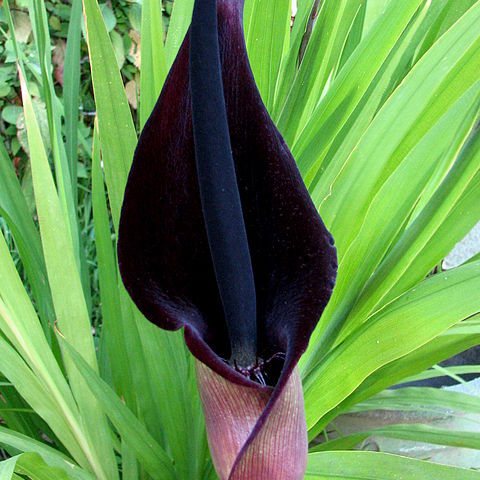Deciduous geophytes; stem tuberous, cormous or rhizomatous. Leaves several together; blade mostly hastosagittate to sagittate; primary veins joining a conspicuous submarginal vein; venation reticulate. Inflorescence solitary among foliage leaves or a few in succession interspersed with foliage leaves; peduncle shorter than to longer than petiole; spathe constricted between lower spathe and limb, convolute in lower part, with limb conspicuous, erect and boat-shaped to spreading and somewhat revolute, wholly marcescent to deciduous after anthesis; spadix shorter than to longer than spathe, sessile; female zone of naked pistils separated from male zone by a usually short zone of filiform ±bulbous-based neuter organs; male zone ostensibly a mass of stamens; stamens subsessile, truncate; above the male zone a second zone of filiform neuter organs sometimes separated from it by a naked zone; appendix conspicuous, usually narrowed in lower part, the remainder tapering to subcylindric. Infructescence a cylindric cluster of orange-red berries ripening basipetally. Berry several–many-seeded.
Scapose, tuberous, monoecious perennial herbs. Leaves hastate or sagittate. Inflorescence solitary, terminal, scape terete; spathe funnel-shaped. Spadix much < spathe; female flowers basal, sterile flowers between these and male flowers, with upper zone of sterile flowers below terminal, clavate, stipitate appendage. Berry scarlet or purplish. Spp. c. 15, of Europe (especially the Mediterranean), N. Africa and Asia Minor. Adventive sp. 1.


